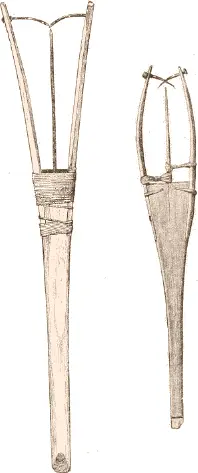
Fig. 453. Kakivang or salmon spear. (National Museum, Washington, a , 34087; b , 34086.) ¼
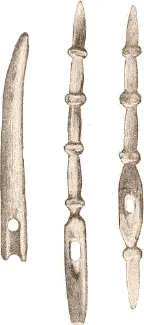
Fig. 455. Quqartaun for stringing fish. c (Museum für Völkerkunde, Berlin. IV A 6831.)
At some places wears are built, above which the fish are caught. These consist of dikes of stones about one and a half or two feet high, which are piled across a creek some distance below high water mark. The salmon cross the wall at high water, but are cut off from the sea at half tide and are speared while there. In other places the forks of rivers are shut off by dikes, above which the salmon gather.
In autumn salmon are caught when ascending the rivers. Sometimes they linger too long in small ponds and, as the rivers quickly dry up at this season, are prevented from getting out of the pools. Here they are caught until late in the season. Some of these ponds freeze to the bottom in winter, and the natives, when visiting them in the spring, cut holes in the ice and take out the frozen fish.

Fig. 456. Salmon hook. (National Museum, Washington. 10142.) 1/1
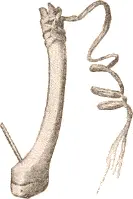
Fig. 457. Salmon hook. (Museum für Völkerkunde, Berlin. 6847.) 1/1
In the early part of the spring salmon are caught with hooks (kakliokia, Iglulik; niksiartaung, Oqo), holes being cut through the ice of the lake. Formerly the hooks were made of deer antlers. Another device consists of a nail, crooked and pointed at one end, the other being let into a piece of ivory or bone (Fig. 456). A third one is represented in Fig. 457.
The fishing line is made of plaited deer sinews and is either held in the hand or tied to a short rod. Along with these hooks baits are used similar to those mentioned in the foregoing description. If the carving represented in Fig. 458 is used, the hook is tied to it by means of two holes on the lower side of the fish, while the line passes through its back. The fish, in coming near the bait, is generally caught by the hook in the back or side. In this manner salmon, trout, and all kinds of sea fish are caught.

Fig. 458. Bait used in fishing with hooks. (National Museum, Washington. 34108.) 1/1
I myself have never seen any nets for fishing, but Klutschak found them in use among the Utkusiksalik tribe, and Petitot (Les grands Esquimaux, p. 278), among the natives of Anderson River. The Labrador Eskimo also use nets.
Table of Contents
Making Leather and Preparing Skins
Table of Contents
Most of the implements of the Eskimo are made of some part of the animals which they pursue. The skins are used for clothing, for building purposes, and for covering the frames of boats. Many implements are made of bone, others of walrus tusks or narwhal horn. As wood is extremely scarce, bone or other parts of animals must make up the deficiency. I shall here describe the methods of preparing these materials.

Fig. 459. Butcher’s knife with bone handle. (National Museum, Washington. 34080.) ¼
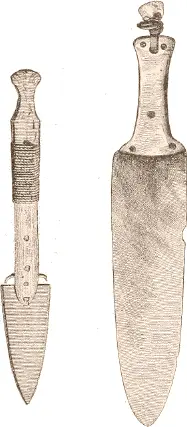
Fig. 460. Pana or knife for dissecting game, a (From Parry II, p. 548.) b (American Museum of Natural History.)
The skin of the seal ( Pagomys fœtidus ) is dressed in different ways, according to the purpose for which it is intended. In skinning the animal a longitudinal cut is made across the belly with a common butcher’s knife (saving). Most natives have procured this useful instrument and even in olden times a considerable number had found their way from Hudson Bay territory to their countries. The large knives of their own manufacture (pilaut) are of similar form, a metal edge being inserted into an ivory blade. Figure 459 is a more modern knife, an iron blade being fastened to a bone handle.
The skin, with the blubber, is cut from the flesh with the same knife, or still more easily with the pana, the old device of which is represented in Fig. 460 a (Parry II, p. 550). This knife is about one foot and a half long (Parry II, p. 503). The use of the small prongs near the blade was not explained by Parry. In Fig. 460 b is presented a pana from the eastern coast of Hudson Bay, collected by Dr. R. Bell; the handle is made of bone, the blade of iron. The flippers are cut off at the joints, and thus the whole skin is drawn off in a single piece. In dressing the animal the natives open the belly and first scoop out the blood, then the entrails are taken out, the ribs are separated from the breast bone and from the vertebrae, the fore flippers (with the shoulders and the hind flippers) are taken out, the only part remaining being the head, the spinal column, and the rump bone. Generally these are not eaten, but are used for dogs’ food.
The knife (ulo) used by the women serves to clean and prepare the skins. This implement, with which almost all the cutting is done, is shaped like a crescent, the handle being attached to the center, and greatly resembles a mincing knife. Fig. 461 represents the form which is now in use. Fig. 462 is a very old ulo handle from a stone circle on Qeqertuqdjuaq (Cape Broughton). It is made of bone and has a slit for the slate blade. It is worth remarking that this blade had not been riveted to the handle, but fastened with a kind of glue (see p. 526). There are a few arrow and harpoon heads the blades of which are inserted in the same manner; the bone is heated and the blade is inserted while it is hot. As it is cooling the slit becomes narrower and the blade is firmly squeezed into the bone handle. Part of a slate blade, which had been riveted to the handle, is shown in Fig. 463. Fig. 464 represents a handle from a recent grave.
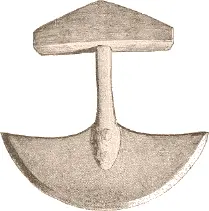
Fig. 461. Form of ulo now in use. (Museum für Völkerkunde, Berlin. IV A 6733.) ⅔
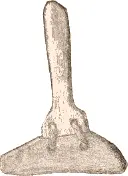
Fig. 462. Old ulo with top of handle broken off from Cape Broughton, Davis Strait. (Museum für Völkerkunde, Berlin.) 1/1
In preparing the skin the women spread it over a piece of whalebone (asimautang), a small board, or a flat stone, and sit down before it, resting on their knees, the feet bent under the thighs. They hold the skin at the nearest edge and, pushing the ulo forward, remove the blubber from it and deposit the latter in a small tub which stands near the board. As they proceed to the opposite end of the skin, the finished part is rolled up and held in the left hand.
Читать дальше





















